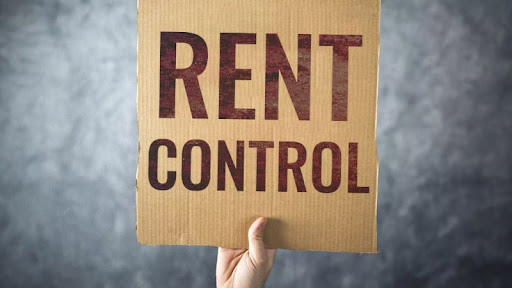
In recent months, the issue of rent control in Australia has been at the centre of intense scrutiny.
The Victorian Government has sparked debate across the nation by indicating that it is considering both restricting the range of a rental increase and limiting rent increases to once every two years.
The implications of these moves could be profound, leading to the potential reshaping of the property landscape.
The Prospects of Rent Control
Rent control, or 'caps', are poised to become a major threat to investors as the Victorian Government is set to overhaul the state’s property rules.
This has sent a ripple of unease throughout the investment community.
This apprehension isn’t exclusive to Victoria – we’re seeing it nationwide.
The Queensland State Government introduced similar laws in April, ushering in new tighter regulations for property owners and a once-a-year rule on rent increases.
But why this sudden interest in rent controls?
The idea is to protect tenants from skyrocketing rental prices, especially during these challenging economic times.
However, as we've learned from history and basic economics, there’s no such thing as a free lunch.
The fallout from these regulations may just outweigh the supposed benefits.
Concerns from the Real Estate Industry
The Real Estate Institute of Victoria (REIV) has expressed strong concerns about the direction the government is taking.
Quentin Kilian, CEO of the REIV explained:
"This decision to cap rents, if they proceed with it, will cause untold damage to an already fragile rental market in Victoria – already under duress from land tax increases, interest rate rises and increasing regulation.
What we need is measured approach, in consultation with industry, to incentivise sustained supply, not a knee-jerk reaction that smacks of political opportunism.
In any supply chain, and the rental market is an essential supply chain, how can you dictate to a supplier that they cannot increase their costs under any circumstances but at the same time you continue to increase costs to the supplier?
Yet, our political leaders seem to think this is a good idea to implement.
The result will be an increased and sizeable departure of rental providers, leading to much less rental stock available, much higher prices and more homelessness.”
If rent is capped and cannot move with the market, investors are unable to respond to cost movements such as increasing interest rates, maintenance etc.
They are very likely to take their hard-earned savings elsewhere, which is what we are already seeing as a response to the increases in Land Tax.”
Killian makes some good points: rent control disrupts the basic market equilibrium of supply and demand, exacerbating the issue it's trying to solve.
Cath Evans, Executive Director of the Property Council of Australia commented:
“In all our discussions with Government and other stakeholders on this issue, there appears to be consensus that the housing affordability crisis is driven by a severe lack of supply coming to market due largely to cumbersome planning processes across all levels.
The only thing that will address the fundamental cause of this crisis is by industry and Government working together to build more dwellings and give Victorians more choice in where they want to live.
As we submitted to the Parliamentary Inquiry on Housing and Rental Affordability earlier this month, the global evidence on rent caps is in – they make it harder to maintain a property, incentivise owners to sell and reduce the supply of rental housing.
For our growing build-to-rent sector, it will harm project financing and restrict service offering.
All of these outcomes are completely at odds with what we need from housing policy. It is not fair, and it will not work.”
Investors: A Vital Piece of the Puzzle
In the property ecosystem, investors play a vital role.
They provide a significant supply of rental stock, in fact, 92% of tenants rent from mum and dad Aussie investors.
The REIV warns that,
“The result will be an increased and sizable departure of rental providers, leading to much less rental stock available, much higher prices, and more homelessness.”
Reports reveal that private investors have already been exiting the market.
For instance, a report from investment bank Jarden shows an increase in the portion of investors behind new listings, up to 36% in Melbourne and 40% in Sydney from a long-term average of 30%.
As investors exit, properties revert to owner-occupiers, shrinking the pool of available rentals and tightening vacancy rates.
Currently, the national vacancy rate sits at around 1.2% - there are just not enough properties to lease.
Looking Ahead
If rent control becomes a reality, the future could look very different for the Australian rental property market.
With the government supplying very little new rental accommodation, even for social and affordable housing, traditionally the provision of rental accommodation has been left to ordinary Australian investors.
Sure rents have skyrocketed in the last couple of years, but they still haven't kept up with inflation over the last decade, and rental returns, despite the rental crisis, remain weak in terms of ongoing earnings.
The current increase in rents is not as much a factor of rising cost for landlords, but more because of a lack of supply of accommodation due to a number of factors including investors selling up, fewer new investors entering the market and little increase in new accommodation being built, all happening at a time when immigration levels are surging.
Ultimately, the imposition of rent controls could dramatically alter the landscape of the Australian property market.
As overseas experiences, particularly in the UK, have shown, government intervention can lead many mum-and-dad investors to exit the market.
The same risk is now clearly present in the Australian market.
As such, we must tread carefully, balancing the needs of tenants and investors alike, to ensure a sustainable future for our property sector.
